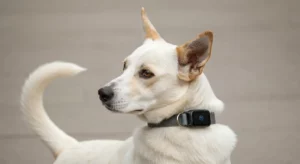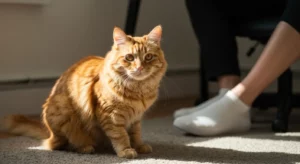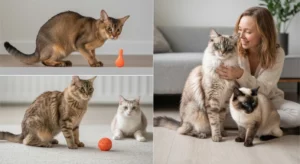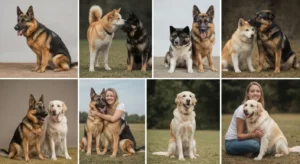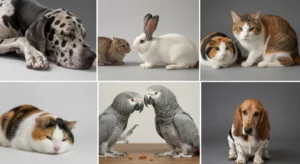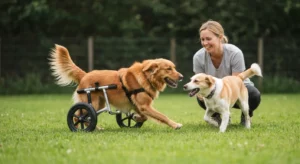I’ve had dirt under my fingernails from building enclosures, mysterious stains on my favorite shirts, and my heart stolen more times than I can count. My life has been a wonderful, chaotic, and deeply rewarding journey alongside animals of all shapes and sizes. From my early days volunteering at the local shelter, cleaning out kennels with a smile on my face, to my years as a vet tech marveling at the resilience of our furry, scaly, and feathered friends, I’ve learned one fundamental truth: the world of animal companionship is so much bigger and more wonderfully weird than most people imagine.
We all know the unconditional love of a dog or the quiet companionship of a cat. But beyond the mainstream, there’s a whole universe of creatures with personalities so unique and appearances so captivating, they deserve their own moment in the spotlight. These aren’t just “exotic” pets for the sake of being different; they are animals that, under the right care, can form profound bonds with their humans.
Over the years, I’ve had the privilege of knowing some of these lesser-known gems. This list isn’t just a rundown of facts you could find anywhere. This is personal. These are the stories of the animals that left paw prints, claw marks, and slimy trails on my heart. These are five of the cutest pets you’ve probably never heard of, and the lessons they taught me.
-
The Fennec Fox: A Lesson in Loving Wild Energy
The first time I saw a Fennec Fox, I honestly thought I was looking at a Pokémon that had come to life. I was volunteering at a small, licensed exotic animal rescue, and a new arrival named Finn had just been surrendered. He was all ears—truly, his ears were almost as big as the rest of his head—with enormous, soulful black eyes and a tiny, twitching nose. The “cute” factor was off the charts. I was instantly smitten.
My initial job was just to clean his enclosure, but I was determined to earn his trust. Finn was a whirlwind of energy. He didn’t walk; he bounced. He didn’t play; he launched himself at toys with ferocious glee. And the digging! I learned very quickly that for a Fennec, any substrate—sand, dirt, blankets, even a stray T-shirt—is a construction site waiting to happen. His enclosure looked like a tiny, chaotic moonscape after just an hour of him being active.
But the biggest surprise was the noise. People see these adorable photos online and imagine a quiet, cat-like creature. Finn taught me otherwise. When he was happy, he made a soft, purr-like chitter. But when he was excited, startled, or wanted attention, he would let out a scream that could rival a fire alarm. The first time I heard it, I nearly dropped the food bowl I was carrying. It was a raw, primal sound that served as a constant reminder: this is not a domesticated animal.
My breakthrough moment with Finn came after weeks of patience. I would sit just outside his enclosure and talk to him in a low, calm voice. One afternoon, instead of his usual manic bouncing, he approached the wire, sat down, and just watched me. He tilted his head, his satellite-dish ears swiveling to catch every sound. After a few more days of this, the rescue owner allowed me to sit inside with him. He kept his distance at first, but then, he cautiously hopped over, sniffed my leg, and curled up in a tight ball about a foot away from me, letting out a soft, contented chitter before dozing off. My heart felt like it was going to burst. In that quiet moment, I understood that earning the trust of an animal like Finn is a gift, not a guarantee.
My takeaway for you: A Fennec Fox’s cuteness is a siren’s call. They are captivating, but they are a massive commitment. They require a highly specialized diet (not dog food!), a large and incredibly secure outdoor enclosure (they are escape artists and can dig several feet in a single night), and a deep understanding of their wild instincts. They aren’t pets you can cuddle on the couch like a puppy. Loving a Fennec Fox means loving their wildness, their energy, and their screams, not just their adorable face. It’s a challenge reserved for the most dedicated and experienced keepers.
-
The Sugar Glider: A Bond Built in the Dark
I thought I was a night owl until I brought home Pip and Squeak. My journey with sugar gliders began after a friend of a friend could no longer care for her bonded pair. I’d done my research, but nothing prepares you for the reality of living with nocturnal marsupials. For the first two weeks, all I knew of them were tiny shadows that would crab—a strange, buzzing sound of fear—whenever I came near their massive, floor-to-ceiling cage.
I felt like a complete failure. Here I was, this “experienced animal person,” and I couldn’t even get these two tiny fluffballs to like me. The breakthrough came with a technique called “tent time.” Every single night, I’d set up a small pop-up tent in my living room, place their cage inside with the door open, and just sit in there with them. For the first few nights, they stayed in their cage. Then, Pip, the braver of the two, tentatively crept out. I stayed perfectly still, my heart pounding.
The turning point was a slice of apple. I held it out on my open palm. Pip scurried over, snatched it, and darted back to the safety of the cage. But he came back. Squeak followed a few nights later. Soon, “tent time” became the highlight of my day. They would crawl all over me, their tiny, sticky hands gripping my shirt as they explored. One evening, Pip climbed to my shoulder, peered into my face with his huge, black eyes, and then, with a leap of faith, glided across the tent to land softly on a pillow. It was pure magic. I was their jungle gym, their safe space, their human tree.
Living with gliders is a messy, beautiful chaos. Their dietary needs are complex—a precise mix of protein, fruits, and vegetables to mimic their natural diet of insects and sap. I spent more time chopping tiny salads for them than I did for myself! And yes, they are messy. They have a habit of throwing food they don’t like, and their cage requires constant cleaning. But the bond you form is unlike any other. Having a sugar glider fall asleep in a bonding pouch against your chest, trusting you completely, makes all the fruit-flinging and late nights worth it.
My takeaway for you: Sugar gliders are not “pocket pets” you can ignore. They are highly social and must be kept in pairs or groups. They require a huge vertical cage to climb and glide, a complex diet, and hours of your time for bonding, especially at night. If you’re not prepared to turn your schedule upside down and become a nocturnal creature yourself, they aren’t for you. But if you are, the reward is a deeply personal, interactive relationship with an incredibly intelligent and enchanting animal.
-
The Patagonian Mara: The Rabbit-Deer of My Dreams
Of all the animals I’ve worked with, none have blurred the lines between different species quite like the Patagonian Mara. I spent a summer working at a private farm and sanctuary that had a breeding pair, which the owner affectionately called “the giant guinea pigs.” But that description doesn’t do them justice. Imagine a creature with the long, delicate legs and gait of a deer, the face and ears of a rabbit, and the social habits of a prairie dog. They are, in a word, surreal.
The pair at the sanctuary were named Willow and Rowan. They were incredibly shy but fiercely bonded to each other. Maras are one of the few monogamous mammals, and watching Willow and Rowan was like observing a lifelong love story. He would stand guard while she grazed, and she would follow him everywhere. They communicated in a series of low grunts, whistles, and squeaks.
My job involved providing their daily diet of hay, grasses, and specialized pellets. At first, they would bolt to the far side of their huge, fenced pasture the moment I entered. I never pushed it. I simply left their food and sat quietly, watching them from a distance. Over weeks, their curiosity began to outweigh their caution. Rowan, the male, would slowly approach, stamping a front foot and letting out a soft “whuff” sound. I learned this was his “are you a threat?” signal. I’d stay perfectly still, not making eye contact.
The day Rowan finally ate from a bowl just a few feet from me felt like a monumental achievement. Soon after, Willow started to trust me too. They never became cuddly—that’s not in their nature—but they would graze peacefully nearby and occasionally follow me around the pasture at a respectful distance, like a very polite, long-legged escort. It taught me a profound lesson about animal relationships: affection isn’t always about physical contact. Sometimes, it’s about the quiet, earned presence of a wild animal choosing to share its space with you.
My takeaway for you: Let’s be clear, Patagonian Maras are not house pets. They are large rodents that need an immense amount of fenced-in space to run and graze. Their shy nature means they don’t thrive in a busy household environment. They are a wonderful example of an animal that is fascinating and cute but best appreciated in a sanctuary or zoo setting. For me, the joy was in the observation and the slow-burn trust, a reminder that the greatest reward in animal care is often just being allowed into their world, on their terms.
-
The Axolotl: The Smiling Amphibian Who Taught Me Science
After years of dealing with fur and feathers, I decided to dip my toes into the world of aquatics. I wanted something unusual, something with personality. I found it in a tiny, pink, four-legged creature with feathery external gills and a permanent, goofy smile: the Axolotl. I named mine Gilly, and he became my little underwater science experiment.
I thought, “How hard can a glorified fish be?” I was humbled very, very quickly. Axolotls require cold, pristine water. Not cool water, cold water. My apartment was too warm, so my first major purchase was an expensive aquarium chiller. Then came the nitrogen cycle. I spent weeks testing ammonia, nitrite, and nitrate levels, doing water changes, and feeling like a frustrated chemist. There were moments I was ready to give up.
But then, I’d look at Gilly. He’d be floating serenely at the bottom of his tank, his little face seemingly smiling up at me. And when it was feeding time? Pure joy. I fed him earthworms, and he would perform an excited “worm dance,” wiggling his whole body before lunging and slurping it down with a comical gulp. He absolutely learned to recognize me. When I’d approach the tank, he’d swim right up to the glass and follow my finger back and forth. For an animal with a supposedly simple brain, his personality was huge.
The most incredible thing about Axolotls is their regenerative ability. They can regrow entire limbs, parts of their brain, and their spinal cord. While I fortunately never had to witness this firsthand, just knowing that I was caring for such a biological miracle was awe-inspiring. Gilly wasn’t just a pet; he was a living, smiling testament to the sheer wonder of nature.
My takeaway for you: An Axolotl is a fantastic pet for someone who loves the science of animal care. The initial setup can be costly and requires immense patience (cycle your tank!), but once established, their daily care is relatively simple. The number one rule is no gravel. They can ingest it, causing fatal impaction. A bare bottom or very fine sand is the only safe option. They are a pet that rewards diligence with decades of quirky, smiling companionship. They teach you that interaction and personality aren’t limited to creatures that can cuddle in your lap.
-
The Quokka: The Happiest Animal I Could Never Own
This last one is a bit different. It’s a story about the cutest animal I’ve ever met, and why my love for it means I would never, ever want one as a pet. Several years ago, I took a trip to Western Australia, with one primary goal: to visit Rottnest Island and see a Quokka in the wild.
Known as “the world’s happiest animal” because of the natural upward curve of their mouths, Quokkas are every bit as adorable in person as they are in the viral selfies. They are small marsupials, about the size of a house cat, and they hop around the island with a fearless curiosity. The rules on the island are strict: you cannot touch them, and you cannot feed them. They are wild animals, and keeping them that way is paramount.
I spent an entire afternoon just sitting on the grass, watching them. A mother emerged from the brush, a tiny joey peeking from her pouch. A group of them munched on leaves, their little cheeks puffed out. It was peaceful, it was perfect. At one point, a particularly bold Quokka hopped right up to me, sat back on its haunches, and looked at me with its cheerful, placid expression. It sniffed the air, twitched its nose, and then calmly hopped away to continue its search for food. It wasn’t a pet-owner interaction. It was a moment of mutual, respectful existence between two species.
That moment crystallized a belief I’ve held for a long time: true animal enthusiasm isn’t about possession. It isn’t about what we can take from the wild and put in our homes. It’s about respect, conservation, and appreciating beauty where it belongs. The Quokka’s smile is a product of its environment, its freedom, and its wildness. To cage that would be to erase the very thing that makes it so magical.
My takeaway for you: Some of the world’s cutest animals are meant to be loved from a distance. The best way to “have” a Quokka is to support the conservation efforts that protect their habitat. It’s to practice responsible ecotourism if you are ever lucky enough to see them. This, to me, is the pinnacle of being a pet lover—understanding that sometimes, the greatest act of love is to leave them be, happy and wild.
From the high-energy chaos of a fennec fox to the quiet smile of an axolotl, my journey has taught me that “cuteness” comes in infinite forms. But with it always comes responsibility. Whether it’s a common Golden Retriever or a rare Patagonian Mara, every animal deserves to have its unique physical, social, and emotional needs met. My hope is that by sharing these stories, I’ve not only introduced you to a few new adorable faces, but also to the profound joy and duty that comes with sharing our lives with any animal, no matter how unheard of.




